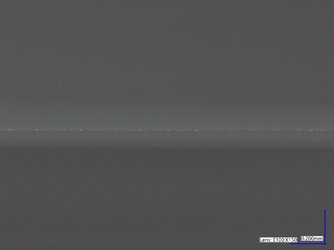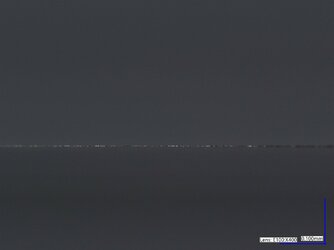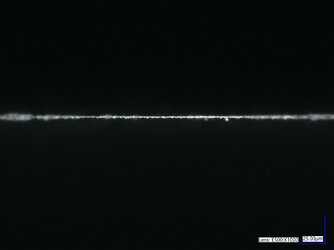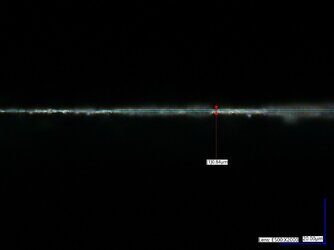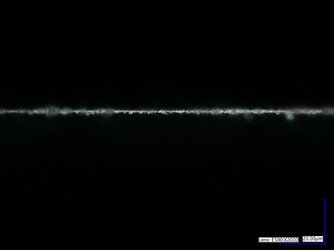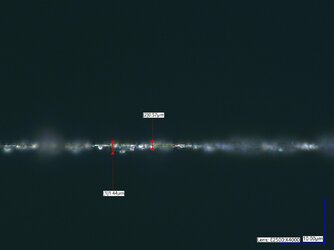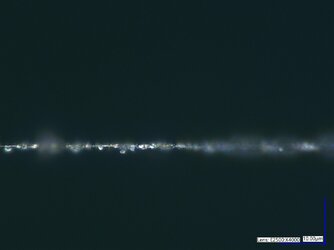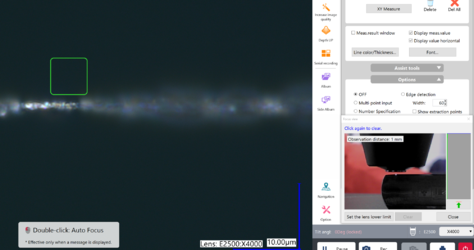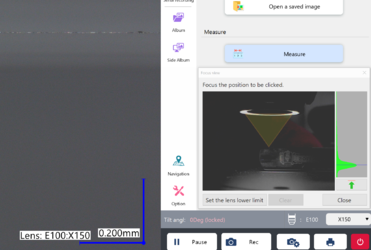Hi All,
This is NOT a post about edge quality / shave quality etc using a microscope to judge it.
This is a simple "I have an insane microscope at work and I fancied using it on my razor edge" post. I just wanted to share some cool pics.
For reference, the microscope is a Keyence VHX7000 with optical magnification between 20x to 6000x.
Here are images of my Dovo pearlex razor edge. I honed it last night on Shapton G7 stones, up to the 0.44um grit. The lens used, magnification and scale are on all the images.
In the next post (can only put in 10 pics at a time), I laid the razor on its back and tried to image (and measure) the apex directly. The microscope has a call side view camera to show the focal plane (to help positioning / focussing on your sample) so I took a screenshot of that too.
Enjoy!
James
This is NOT a post about edge quality / shave quality etc using a microscope to judge it.
This is a simple "I have an insane microscope at work and I fancied using it on my razor edge" post. I just wanted to share some cool pics.
For reference, the microscope is a Keyence VHX7000 with optical magnification between 20x to 6000x.
Here are images of my Dovo pearlex razor edge. I honed it last night on Shapton G7 stones, up to the 0.44um grit. The lens used, magnification and scale are on all the images.
In the next post (can only put in 10 pics at a time), I laid the razor on its back and tried to image (and measure) the apex directly. The microscope has a call side view camera to show the focal plane (to help positioning / focussing on your sample) so I took a screenshot of that too.
Enjoy!
James
Attachments
-
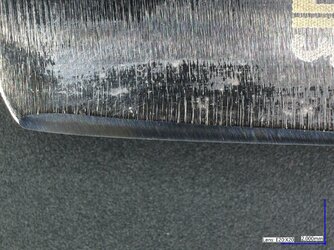 Dovo pearlex bevel 20x 0 44um stone.jpg1.8 MB · Views: 136
Dovo pearlex bevel 20x 0 44um stone.jpg1.8 MB · Views: 136 -
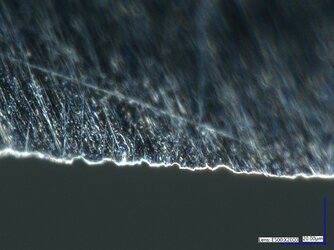 Dovo pearlex bevel 2000x 0 44um stone.jpg1.2 MB · Views: 138
Dovo pearlex bevel 2000x 0 44um stone.jpg1.2 MB · Views: 138 -
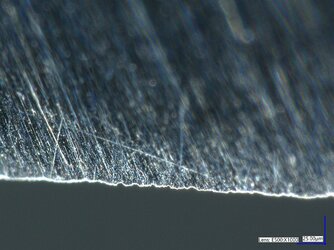 Dovo pearlex bevel 1000x 0 44um stone.jpg1.5 MB · Views: 122
Dovo pearlex bevel 1000x 0 44um stone.jpg1.5 MB · Views: 122 -
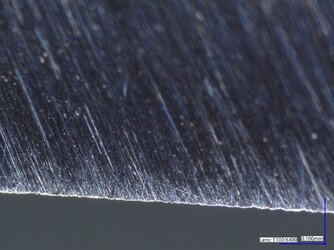 Dovo pearlex bevel 400x 0 44um stone.jpg1.3 MB · Views: 120
Dovo pearlex bevel 400x 0 44um stone.jpg1.3 MB · Views: 120 -
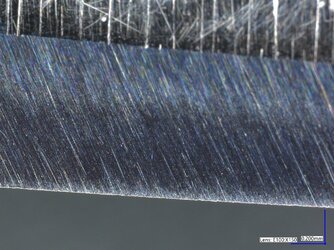 Dovo pearlex bevel 150x 0 44um stone.jpg1.5 MB · Views: 123
Dovo pearlex bevel 150x 0 44um stone.jpg1.5 MB · Views: 123 -
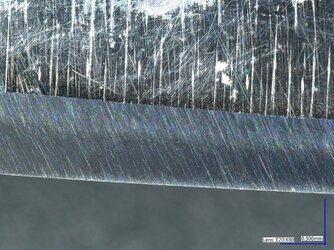 Dovo pearlex bevel 80x 0 44um stone.jpg1.8 MB · Views: 113
Dovo pearlex bevel 80x 0 44um stone.jpg1.8 MB · Views: 113 -
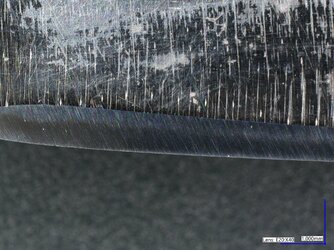 Dovo pearlex bevel 40x 0 44um stone.jpg1.5 MB · Views: 124
Dovo pearlex bevel 40x 0 44um stone.jpg1.5 MB · Views: 124
